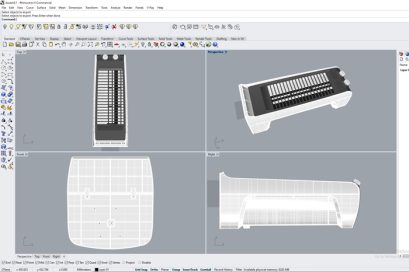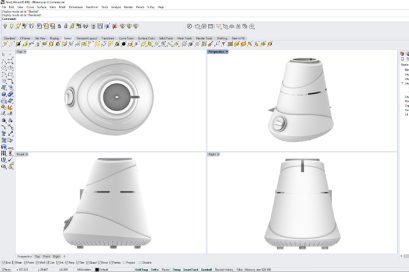Product modeling refers to the process of creating a representation of a product in a structured 3D CAD format that can be used for various purposes, such as design, analysis, simulation, documentation and finally manufacturing.
Our Product Modelling is categorized namely:
1) Inorganic Surface Modelling
2) 3D Detailed Modelling and Component Assembly
Inorganic Surface Modelling
Once we have basic sketches in place from the Product Ideation phase, we start inorganic surface modelling which gives 3D shape to the 2D ideation. In this phase, we create 3D CAD forms from 2D sketches and analyze the aesthetic appeal of the product. We visualize the form considering parameters such as dimensions, weight, material finish and surface complexity. We communicate the progress to clients through concept renders and presentation to get feedback on basic concept design, which takes us closer to the final envisioned product. Once we have the basic form locked in, we move to the next phase of 3D CAD Detailed Modelling.
3D Detailed Modelling and Component Assembly
Detailed modelling is the phase wherein we create a exact scale model with detailed fittings, component assembly as per the final product. Once we have a properly designed surface model of the product, we use that class A model to convert to Class B model, having details of component placing, fitting such as screw, threads, mounting bosses, flange, locking snaps etc. We also consider mold feasibility parameters such as Draft lines, undercut analysis, Parting position, Thickness uniformity while material filling, Gate design for mold, Core Cavity feasibility, etc. This gives us an exact idea of operation in developing the product die and the Manufacturing feasibility of the product. It also gives clarity of sourcing precise components with accurate fitting. Once we assemble all components, we also get the final product physical visualization compared to proposed design.


